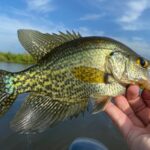Fishing for catfish during the winter or during strong cold fronts can be challenging….And it has many anglers asking if they even bite during the winter? how do you target and catch them during cold weather?
Catfish do bite in cold weather and eat the same baits they did during the warmer months. While they are somewhat lethargic in cold water and often seek refuge in deep water when temperatures drop, catfish still need to feed.
In this article, I’ll talk more about where catfish go during the winter, and tactics you can use to find success no matter how cold it is outside!
Table of Contents
Do Catfish Bite in Cold Weather?

Despite contrary belief, catfish do feed and bite in cold weather. But there location and feeding frequency changes as the temperatures drops, often making them harder to target. During winter and late fall, when water temperatures drop below 60°F(15.5°C), catfish bunch up in huge numbers and head to deep water, seeking shelter.
They slow down, becoming less aggressive in hunting for food, which means that catching winter catfish requires more work and effective strategies.
Catfish prefer areas that drop off into deeper water, around creeks or river channels, and drop-offs around humps and will look for easy meals, like lethargic threadfin and gizzard shad that live in the deepwater areas. They will also bite into cut baits of shad, shrimp, or bream.
Is It Harder To Catch Catfish in Winter? Why?
Contrary to the commonly-held belief that catching catfish in winter is more challenging than during summer, if done right, winter catfish angling can turn out much more productive. This is because it’s much easier to locate large concentrations of winter catfish than summertime catfish.
So why do anglers think it’s harder to catch catfish in winter?
- Many anglers associate catfish with warm weather, so they assume catfish don’t bite during winter.
- Others believe the catfish undergo hibernation during winter, burying themselves in the mud until spring.
But the real reason why catfish may not be biting is quite interesting…
Since catfish are quite sensitive to drops in water temperature, they search desperately for the warmest waters in lakes or rivers.
These waters are often located in deep “wintering” holes that are considerably deeper than other bottoms. The catfish find these holes and nest in these waters in their hundreds.
This is especially true in many of the large reservoirs and rivers of the midwest and southeastern United States.
Once you encounter any of these holes, you are likely to catch lots of catfish.
A standard lake could contain 2-30 well-defined wintering holes. What’s more, the catfish are most likely to spend wintertime in or around one of these holes, which means that up to 95% or more of a given lake or river is without catfish during winter.
This makes finding catfish somewhat challenging since the wintering holes comprise only 5% of the lake. And locating these holes is not that easy.
Therefore, to catch catfish in cold weather successfully, you need to:
- Locate the deep wintering holes that exist in the water (study topographic maps and use your fish finder or Livescope system).
- Match the weather conditions with known catfish behavior. Catfish stack up at the bottom of wintering holes when the air temperature gets colder than water temperature.
- Use both live and cut bait to get bites (the stronger scent the better).
How To Catch Catfish in Cold Weather
Summertime catfishing is indeed relatively easy, as catfish spread out evenly throughout lakes or rivers. However, as already noted, winter catfish bunch up into massive congregations once water temperatures dip, moving into deeper waters in search of wintering grounds.
But it’s not only that catfish engage in this activity. Most freshwater game fish and bait do likewise.
On the days when the air temperature goes lower than that of the water, catfish emerge from their deep hideout and start foraging in shallower waters. Wintering holes attract not only catfish but also shad and other baitfish, which results in large schools of shad that can go extremely deep.
Find the bait, and you’re likely to find the fish!
Locating Wintering Holes
As mentioned, wintering holes are normally deeper than the surrounding water and can go to depths of more than 20’ (6.09 m). If you are near a large lake, you can locate wintering holes around the mouths of creeks or rivers pouring into the lake.
Alternatively, you can find them on the main water body, close to the fingers of reservoirs. The water temperature in these sites tends to remain consistent throughout the winter period.
Places to find catfish wintering holes during cold weather:
- Water treatment plants and power plants dump warm water (these can be a gold mine!)
- Natural warm-water springs (usually around 72 degrees)
- Steep shoreline section along bluffs and ridges.
- Small rivers downstream where it dumps into a major river. Such an area is more expansive, it experiences fewer currents, and air temperature changes cause minimal impact.
- A deep bend occurs in a bigger river, near the mouth of a creek or stream, or an oxbow bend.
To really make the most of your time, spend the longer and warmer days of summer surveying and scanning your lake for these areas.
Mark them on your GPS or fish finder, and then start fishing them in the winter!
See Also: What Is The Best Time Of Day To Catch Catfish?
Best Baits for Catfish During Winter
The best baits for targeting catfish during winter is their natural prey or something that resembles it. As such, native baitfish of the lake your fishing in make the best bait.
Live shad or cut shad is an excellent cold weather catfish bait.
You can usually purchase live bait from your local bait shop. But if you cannot get any live bait, go for fresh cut bait.
What if you can’t access either live or fresh cut bait? You still have other options.
Some anglers have a lot of success with homemade koolaid baits and soap baits. Yes, you read that correctly.
These are inexpensive baits you can make at home, that contain properties that catfish love: Strong scent, fleshy consistency and strong durability.
But the great thing about fishing for catfish is that they are usually not too picky. Other winter catfish bait options include:
- Worms
- Skipjacks
- Chicken liver
- Minnows
- Grubs
- Live Bream
Winter Catfishing Tips
Different catfish species behave in distinct ways during the colder months. So, for successful fishing, anglers need to understand the different species and use specific techniques to target them.
Blue Catfish
These are pretty active in winter, especially during slightly warmer occasions when they get out of the deep wintering holes searching for food. Their size and metabolism make them a premier catfish to target during the winter months.
They are the easiest catfish to catch in winter, and you will often find them suspended high in the water as they feed. They also move into shallow flats with an increase in air temperature.
To catch blue catfish, use large cut shad or herring along with an 6/0 to 9/0 circle hook. Drop the bait deep using a 3 oz. (85 g) weight, and setup upstream of current breaks, eddys and bridges.
Channel Catfish
Channel catfish hunt quite actively in winter, though not as consistently as blue cats. You will find channel cats mainly on the upper slopes of wintering holes, as they usually hover on the top ⅔ of wintering hole inner walls whenever air temperatures go above the water temperatures.
You can use live bait to catch channel cats, but small-cut shad with a 4/0 or 6/0 circle hook make the best option. To get your bait to the bottom, use a 3 oz.(85 g) free-sliding weight.
Flathead Catfish
Flathead catfish are thought to be the least active and most difficult winter catfish to catch.
They typically shut down during winter, entering a semi-hibernated state. Big clusters of these fish stack up on the water bottom, burying themselves in the mud and falling asleep. Still, a slight rise in water temperatures causes them to wake up searching for food, making it easy to catch them.
White Catfish
These are the smallest catfish species and inhabit slow-moving streams, deep lakes, ponds, or reservoirs and are aggressive feeders, feeding primarily during the day. In winter, they move to deeper water and even into thick cover.
To catch winter white catfish, the good old fashioned chicken gizzard or liver is hard to bet. Set out multiple lines, and the smellier the bait, the better!
Bullheads
Bullheads behave similarly to channel cats in cold weather. But they tend to be more active than flathead catfish..
Bullheads are generally reserved but become active with a rise in water temperature. Like channel catfish, you can find these on the upper ⅔ of wintering holes during warmer days.
They also bury themselves at the bottom during colder days.
To catch bullheads in winter, use dead or cut bait. If you wish to target them from a boat or through the ice, use a small circle hook along with a piece of cut shad. These guys dont get too big, so keep you tackle and baits especially small during the winter months.

Additional Tips for Catching Catfish in Winter
Below are more tips to help you catch more catfish in winter:
- Be patient. In other words, fish slowly. Everything slows down a bit when its super cold!
- Look for pockets of warmer water. Catfish desperately seek the warmest water they can get. Even a water temperautre change of 1 or 2 degrees can make a huge difference!
- If Ice fishing, target the ice edges for big catfish since most baitfish, including include shad, shiners, and minnows, will seek deep cover along breaks.
- On warmer days, look for catfish in shallow flats surrounding a river’s deep wintering holes. Target those slopes!
- Keep an eye on the barometric pressure. A drop in air pressure can often stimulated catfish into being more active and aggressive.
Winter Catfishing Methods
From The Bank
Winter catfishing from the bank can be tough because you can only fish from a certain shore radius. And since catfish move to warmer waters, you will need to fish as deep as possible.
Try finding high bluffs and ridges, or the outward bend of oxbows. The outer edges of large river bends are always going to be deepest.
Drift Fishing
Drift fishing refers to winter catfishing with a boat while slow drifting your baits around deep water wintering hotspots. The technique enables you to cover considerable ground, allowing you to place your bait in front of more catfish, thus increasing your odds of catching fish.
However, for successful results, you need to:
- Determine the perfect spot so that your boat and bait can drift without hindrance (do a test drift before deploying your lines).
- Fish in deeper holes where the currents are slower. Look for ‘boils’ and ‘eddys’.
- Get a proper-sized weight that will allow your bait to remain in contact with the ground while still moving with the current.
Stationary Fishing
Stationary fishing entails catching winter catfish in a specific area with your boat anchored. This method is best used where catfish are dormant, holding still within deep pools of water. The most suitable bait to use here is live bait or fresh-cut bait chunks.
This method is especially popular on large rivers, where anglers anchor up along bridge piling, railroad bridges, rock beds, ledges and channels.
Final Thoughts
Don’t let old man winter keep you from getting out and catching some big winter time catfish. If you are fortunate to live in an area with blue catfish or channel catfish, you in luck.
Cold weather just means a change of tactics, with a little persistence you can catch big catfish all year long.
Thanks for reading!
You May Also Like: Using Bluegill For Catfish Bait: Tips and Techniques
If you haven’t guessed yet, I love fishing and everything about it!
To learn more about why I started Panfish Nation, visit the About page and follow along on Social Media:


Download a copy of my FREE Lure Color Selection Chart & Knot Guide!
Stay up to date with fishing reports, tackle reviews, industry news, and much more! We respect your privacy, unsubscribe at any time.
- Crazy Facts About the World Record Crappie

- What Size Hooks for Smallmouth Bass? Quick Guide

- Large and in Charge-Mouth: 10 of the Best Bass Lures of All Time (And Where to Buy Them)

- Emperor of the Sun(fish): What You Need to Know About the World Record Bluegill
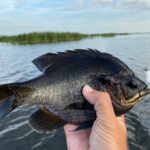
- The Seven Best Lures for Fall Bass Fishing
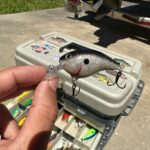
- Which Fishing Line is Best for Bass Fishing With A Spinning Reel?
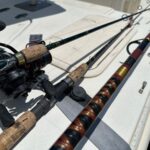
- What Size Hooks for Panfish?
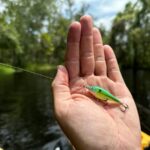
- Coppernose Bluegills: How They’re Different from Common Bluegill
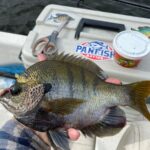
- Best Crappie Lakes In North Carolina
